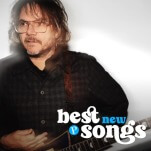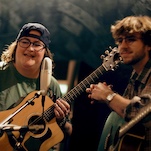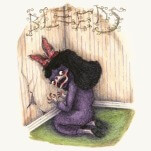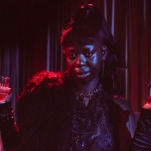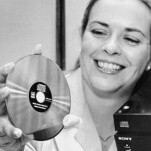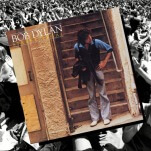Goodie Mob Returns
After a 14-year hiatus of the legendary rap group’s original lineup, and CeeLo’s explosion as a pop-culture icon, the originators of smart, righteously indignant Southern hip-hop are back to claim their legacy, right the ship and venture boldly into new territory.
In some ways, the conversation nowadays is a lot like it was when Goodie Mob burst on the scene back in the mid ’90s. Southern hip-hop is vapid and mindless—at its best, fun, flash-in-the-club party music to shake your ass to; at its worst, a bunch of poseur emcees cashing in on a violent trap-house culture they know only from story-song. The first time around, Goodie Mob was a huge part of the antidote, shattering stereotypes with cutting-edge music that was smart and grimy in equal measure. As they exploded from the gates full of angst and urgency, the four-man group of CeeLo, Khujo, T-Mo and Big Gipp made two brilliant, critically acclaimed albums—1995’s Soul Food and 1998’s Still Standing—and coined the phrase “The Dirty South,” rapping about both the brutal and beautiful truths of ’hood life in Southwest Atlanta. Along with friends and collaborators OutKast, the Dungeon Family and producers Organized Noize, Goodie Mob started a bona-fide ATL-based musical revolution. But after several years of endless touring and a misunderstood third album with sales that failed to meet expectations, the group was dropped from label Arista and began to unravel, first with the departure of creative powerhouse CeeLo in 2000 and then Gipp in 2004.
For more than a decade fans clamored in vain for a reunion of Goodie Mob’s game-changing original lineup. In the meantime, CeeLo’s star was rising—first as a solo artist, and then as half of indie-soul duo Gnarls Barkley, a collaboration with producer Danger Mouse that yielded breakthrough international megahit, “Crazy” in 2006. Eventually, as his solo career continued to thrive, CeeLo even wound up an unlikely TV star, judging reality talent show The Voice alongside pop stars like Christina Aguilera and Adam Levine and becoming a household name in the process. But while CeeLo had the lion’s share of the limelight, all of of Goodie Mob was keeping busy. Gipp released a solo album and and guested frequently on records by platinum-selling rappers like Nelly, Ali and Grillz, and Khujo and T-Mo revived their pre-Goodie Mob collaboration Lumberjacks for two LPs, including one with Pastor Troy.
Still, the Mob found themselves missing each other, both on a musical and family level. By 2008, time and maturity had healed any wounds from the group’s breakup enough to where a surprise performance at Atlanta venue The Tabernacle became the spark that set the current reunion in motion. “All four of us got on stage with Nelly,” T-Mo recalls, “and that was the first time we had been on stage together in probably 10 years. It meant a lot to the fans, it meant a lot to Atlanta, and it meant a lot to us. It gave us confirmation that it was time to get back together.”
“These are my brothers,” CeeLo explains. “We go all the way back to early childhood. Music brought us together in a formal fashion but first and foremost, our families are only streets over from each other. T-Mo’s family and the home he grew up in is only one street over from my grandmother’s house that I grew up in. We have been together our entire lives. And, yes, we did have a public dispute—family matters spilled over into the street. But it was not anger. It was some inconvenience, irritability and some artistic difference, but we were never enemies. And I’m glad we’re able to [reunite now] because it shows the bond of blood and the power of forgiveness and the maturity of moving on.”
That same year, Goodie Mob began working on what would become the classic lineup’s first album in 14 years. The aptly titled Age Against the Machine is an independent affair produced almost entirely by CeeLo, whose new fans are suddenly taking an interest in his more humble beginnings with Goodie Mob. “I wanted to express that ambitious side of myself in terms of hip hop,” CeeLo says. “I never wanted it to appear like that part of myself had been abandoned, which would mean that family and community and home would have been abandoned for commercial success. I thought, both of these things [my solo career and my rap roots] are co-inhabitants and can coexist conceptually and thematically inside of me—I’m all of these things, you just can’t do them all at the same time.”
The reason Age Against the Machine took so long to finish was mainly because of the busy group’s scheduling conflicts, but it also took some time for the music to gel and for them to figure out a new direction. Goodie Mob has always prided itself on carefully thought-out concept records, and had no desire to fall back on the safety net of old, familiar sounds. “We legendary trendsetters,” Khujo says, “and it’s about time for Southern hip-hop culture to take a fresh turn going into the 21st century. It’s all about new ideas, new sounds, presenting it in a whole different way. … We want to be that window in the smoking section—a breath of fresh air, an option to the people out here who really take hip-hop as a culture and not just something to sell.
“I think the mixtape era messed up a lot of stuff,” Khujo continues. “People just thought, ‘Oh, they rappin’—I can do it.’ Back in the day, you really had to go through something to say something. But some of these artists haven’t been through anything. Their senses haven’t been exercised, and to even have the mental capacity to want to sit down and strategically plan out an album—that’s how all our records work, we planned out all of ’em. So much of this [current] music is not well thought-out—they duplicating stuff that’s already been done. You gotta take the time do your homework so you won’t be saying the same thing somebody else is saying.”
What Y’all Know About the Dirty South?
When Goodie Mob’s debut Soul Food hit in 1995, it was a powerful, soulful, unapologetically Southern statement, as you’d expect from the title. The music, provided by Organized Noize, was live and organic, referencing the past while looking ahead to future, and the lyrics were angsty, anti-authoritarian diatribes speaking truth to power in the most poetic way. In tandem with follow-up Still Standing, it captured the frustration, alienation and desperation of black youth at that particular time and place in America. Goodie Mob’s name itself was social commentary, standing for the Good Die Mostly Over Bullshit—“over a coat, a necklace round your throat”—a painful reality of life where they grew up.
It was clear in songs like “Thought Process,” “Cell Therapy,” “Fighting,” “Black Ice” and “They Don’t Dance No Mo” that the group understood its roots, both cultural and musical, in a very deep way. They were from the center of the Civil Rights movement, the home of Martin Luther King, Jr., and their home state was the birthplace of legendary artists from Ray Charles and Little Richard to Gladys Knight and James Brown. “Coming from that kind of stock, [you want] to reach the heights they did, to mean as much to music as they did,” Gipp says. “Acts like that gave people real music, real emotion and that’s why their music will last forever. … We recorded our first Goodie Mob record in Curtis Mayfield’s house. To be able to walk into his bedroom and see actual reels, and the way he would sit down and talk to us about publishing and what was important and not important, when you had these kind of conversations with these icons before you even come out, it makes you want to do more than just rap.”
-

-

-

-

-

-

-

-

-

-

-

-

-

-

-

-

-

-

-

-

-

-

-

-

-

-

-

-

-

-

-

-

-

-

-

-

-

-

-

-


